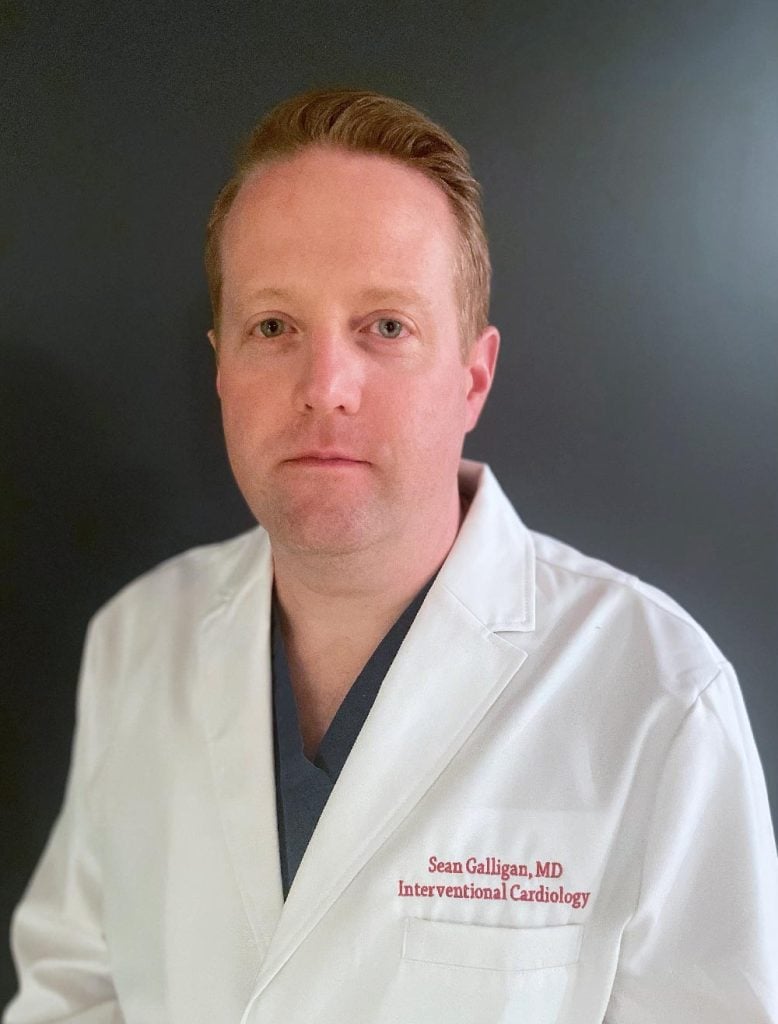With nearly 700,000 people in the U.S. dying every year from heart disease — one every 34 seconds — heart disease is the leading cause of death for men and women of all backgrounds and ethnic groups in America.
The good news is that at least some of the factors that contribute to heart disease are within one’s control, and tools like echocardiograms — which provide minimally invasive ultrasound imagery of the heart — enable cardiologists to diagnose heart disease in patients and recommend appropriate treatment.
In the following interview, Sean Galligan, MD, assistant director of cardiology, explains what an echocardiogram is, how it’s performed, and why it represents one of the most important and beneficial tools in a cardiologist’s arsenal for detecting heart disease or dysfunction.
What’s the state of heart disease in America since the pandemic?
Dr. Galligan: Unfortunately, heart disease is more prominent than ever nationwide (and on Staten Island), especially with many people being more sedentary and indulging in unhealthy eating over the past two years. Some people took time during the quarantine period to work on their health, but many others were left with little to do, which exacerbated their already-sedentary habits. Others found themselves dealing with anxiety and/or depression and looked to food, smoking, and other vices for comfort.
What is an echocardiogram and what does it show?
Dr. Galligan: Echocardiograms provide an ultrasound evaluation of the heart and are a quick, easy, and non-invasive way to assess cardiac structure and function. Ultrasound technology has been around for a long time — it’s the same technology that’s used to monitor pregnancies — and it enables us to not only physically see and evaluate the structures of the heart, but also to measure hemodynamic aspects of the heart (i.e, the dynamics of blood flow) using highly precise Doppler technology. While electrocardiograms, or EKGs, assess the electrical signals coming from the heart, echocardiograms are a more physical and anatomical visualization of the heart and its functionality, and they can also detect a prior heart attack.
Who is a candidate for an echocardiogram?
Dr. Galligan: We do echocardiograms for many reasons, such as for patients with an abnormal EKG or those with heart murmurs, suspected valvular abnormalities, signs and symptoms of heart failure (outward signs of which can include shortness of breath, pain, dizziness, leg swelling, etc.), or risk factors for heart failure. Candidates can be of all ages — for example, we use echocardiograms to screen babies for murmurs or malformation of the heart as well as to screen teens who play sports that increase the risk for sudden cardiac death. Risk factors for heart disease include smoking, medical conditions like diabetes and hypertension, the presence of a heart murmur, symptoms like syncope (passing out/losing consciousness), and a family history of heart disease or sudden cardiac death.
What will patients experience during an echocardiogram?
Dr. Galligan: This quick and simple procedure takes anywhere from 15 to 20 minutes and simply involves our use of an ultrasound probe to take pictures of the heart on the chest wall. It’s all done superficially and there’s nothing invasive — no IVs, for example — and we use gel to enhance the quality of the images. Echocardiograms are typically performed by our technicians in an exam room setting but can also be conducted by physicians at a patient’s bedside in the hospital in the event of an immediate need. Because technology has improved, devices have gotten smaller, and connectivity has become more standard, ultrasound-based procedures like echocardiograms have become more mainstream for point-of-care or acute evaluation.
How do cardiologists use the images generated by an echocardiogram?
Dr. Galligan: We look at how well the ventricles of the heart are moving/contracting, whether the four valves of the heart are opening and closing appropriately, and the general anatomy of the heart to ensure that there’s no thickening/calcification, masses present, or abnormalities related to blood flow. Based on what we see on the echocardiogram — whether it’s a stiff valve, a leaky valve, or another malfunction — we’re able to guide medical treatment for patients and determine the need for further evaluation, a different procedure, or surgery. As cardiologists, we’re trained in performing echocardiograms, but our main role is interpretation of the images and information. At Richmond University Medical Center, our ultrasound technicians are experts in obtaining these images and collecting all of the necessary information and calculations so that we can accurately interpret them. Ultimately, echocardiograms give us such a breadth of information, both anatomically and hemodynamically, and are one of the mainstays of cardiology in that they guide both diagnosis as well as treatment.




